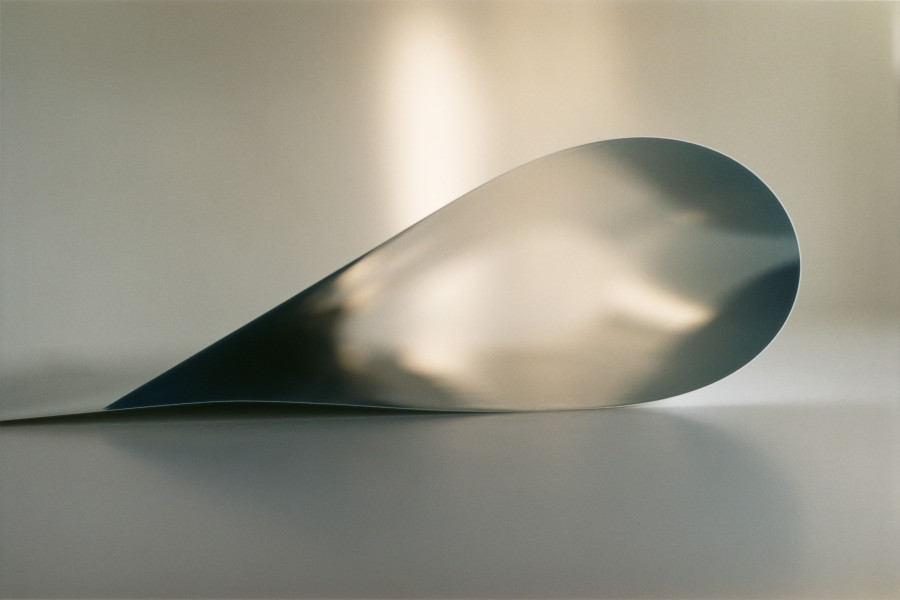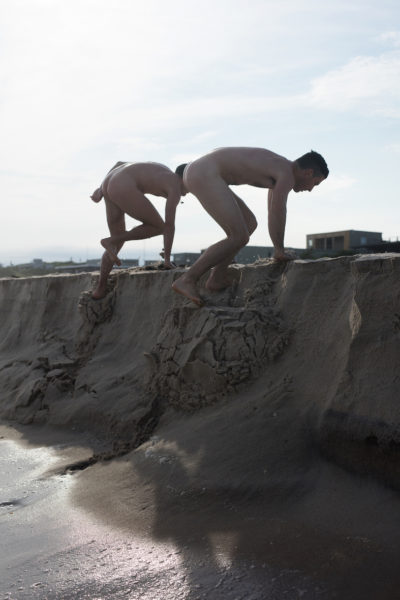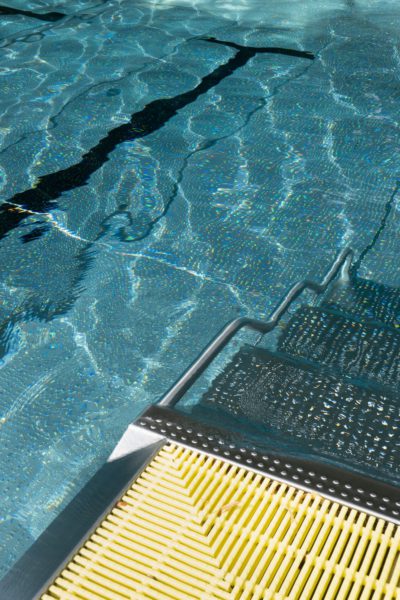Post
Wolfgang Tillmans è nato a Remscheid (Germania) nel 1968; attualmente vive e lavora tra Londra e Berlino. Ha studiato a Bournemouth e al Poole College of Art dal 1990 al 1992. Le sue fotografie sono esposte nelle collezioni permanenti della Tate Britain (Londra), Museum Kunstpalast (Düsseldorf), Sprengel Museum (Hannover) e Pinakothek der Moderne (Monaco). Numerose istituzioni hanno ospitato sue mostre personali, tra le più recenti ricordiamo: Centre Pompidou, Parigi (2025); Haus Cleff, Remscheid, Germania (2025); Albertinum, Dresda, Germania (2025); Peter Marino Art Foundation, Southhampton, New York (2025); Museum of Modern Art, New York (2022); Museum Moderner Kunst Stiftung Ludwig Wien (MUMOK), Vienna (2021); WAKO Works of Art, Tokyo (2020); Tate Modern, Londra (2017); The Metropolitan Museum of Art, New York (2015); Museo d’arte di Lima (2013); Moderna Museet di Stoccolma, Kunsthalle di Zurigo, MAM di San Paulo e Common Guild di Glasgow (2012); Zachęta National Gallery of Art di Varsavia (2011-2012); Hamburger Bahnhof Museum di Berlino, Stedelijk Museum di Amsterdam e Museo Tamayo, Mexico City (2008); Kunstverein München e Kestner-Gesellschaft, Hannover (2007); P.S.1 di New York, Museum of Contemporary Art (MCA) di Chicago, Hammer Museum di Los Angeles, Hirshhorn Museum and Sculpture Garden di Washington DC e Sprengel Museum di Hannover (2007). Inoltre ha preso parte a anche a numerose collettive: MoMA di New York (2012); Pulitzer Foundation for the Arts, St. Louis (2011); Hayward Gallery di Londra (2011, 2010); New Museum di New York, CAPC musée d’art contemporain di Bordeaux e Kunstmuseum Bern (2010); The MoCA di Los Angeles (2009); Tate Modern di Londra, Städel Museum di Francoforte e Hammer Museum di Los Angeles (2008); History in the Making: A Retrospective of the Turner Prize, Mori Art Museum di Tokyo e Triennale di Torino (2008); Tate Britain di Londra, MACRO Museo d’Arte Contemporanea di Roma e Metropolitan Museum of Art di New York (2007); Kunstverein di Monaco (2006). Tillmans è uno dei più influenti artisti della sua generazione; nel 2000 ha vinto il Turner Prize, diventando il primo fotografo e il primo cittadino non inglese a vincere questo premio e, nel 2009, ha partecipato alla Biennale di Venezia diretta da Daniel Birnbaum.
Le fotografie di Wolfgang Tillmans sono ritratti, nature morte, paesaggi urbani, composizioni astratte. In queste immagini, che a prima vista sembrano sfuggire ad una categorizzazione precisa, corre un unico filo armonico che è quello della percezione dell’artista. Nella percezione vi è sempre uno scambio: l’oggetto-foto modifica la realtà che ritrae, esattamente come la figura di un osservatore, modifica la realtà che egli stesso sta osservando. Tillmans con le sue foto non si limita a descrivere o a catturare la realtà, ma agisce su di essa. L’artista sembra puntare non a costruire, ma a ri-costruire un’estetica dal reale, che egli guarda dalla prospettiva della normalità in cui ogni gesto, parola o azione ha sempre in sè componenti varie: emotiva, politica, fisica, civile, intellettuale. Nel fotografare, Wolfgang Tillmans accosta le tematiche più svariate che ritraggono il mondo visibile che lo circonda: la natura selvaggia e/o cittadina, le città con i loro edifici, ma anche persone ed eventi (come la campagna anti-AIDS, i VIP del momento, la sessualità). Infine, negli ultimi anni la sua produzione si caratterizza per la produzione di lavori astratti, in particolare le famose serie “Paper drops” e “Freischwimmer”. La posizione che Tillmans assume nel fotografare è quella di chi dà testimonianza del contesto che lo circonda, senza documentarlo ne estetizzarlo. In questa faglia si rende possibile l’interlocuzione tra arte e realtà.
Wolfgang Tillmans was born in Remscheid (Germany) in 1968; actually he lives and works between London and Berlin. He studied at Bournemouth and Poole College of Art from 1990 to 1992. His photographs are exhibited in the permanent collections of Tate Britain (London), Museum Kunstpalast (Düsseldorf), Sprengel Museum (Hannover) and Pinakothek der Moderne (München). He has had solo shows at Centre Pompidou, Paris (2025); Haus Cleff, Remscheid, Germany (2025); Albertinum, Dresden, Germany (2025); Peter Marino Art Foundation, Southhampton, New York (2025); Museum of Modern Art, New York (2022); Museum Moderner Kunst Stiftung Ludwig Wien (MUMOK), Vienna (2021); WAKO Works of Art, Tokyo (2020); Tate Modern, Londra (2017); The Metropolitan Museum of Art, New York (2015); Art Museum of Lima (2013); Moderna Museet of Stockholm, Kunsthalle of Zurigo, MAM of San Paulo and Common Guild of Glasgow (2012); Zachęta National Gallery of Art of Warsaw (2011-2012); Hamburger Bahnhof Museum of Berlin, Stedelijk Museum of Amsterdam and Museo Tamayo of Mexico City (2008); Kunstverein München and Kestner-Gesellschaft, Hannover (2007); P.S.1 of New York, Museum of Contemporary Art (MCA) of Chicago, Hammer Museum of Los Angeles, Hirshhorn Museum and Sculpture Garden of Washington DC and Sprengel Museum of Hannover (2007). Among his group shows: MoMA of New York (2012); Pulitzer Foundation for the Arts, St. Louis (2011); Hayward Gallery of London (2011, 2010); New Museum of New York, CAPC musée d’art contemporain of Bordeaux and Kunstmuseum Bern (2010); The MoCA of Los Angeles (2009); Tate Modern of London, Städel Museum of Frankfurt and Hammer Museum of Los Angeles (2008); History in the Making: A Retrospective of the Turner Prize, Mori Art Museum of Tokyo and Triennale of Turin (2008); Tate Britain of London, MACRO Museo d’Arte Contemporanea of Rome and Metropolitan Museum of Art of New York (2007); Kunstverein of Monk (2006). Tillmans represents one of the most influential artists of his generation, achieving worldwide notoriety after winning in 2000 the Turner prize, the first photographer to achieve this award and the first non-English citizen. The photographs of Wolfgang Tillmans are portraits, still lifes, urban landscapes, abstract compositions. In these images there is a single harmonic thread that is that of the artist’s perception. The photo-object modifies the reality it portrays, as well as the figure of an observer modifies the reality that he is observing himself. Tillmans with his photos is not limited to describing or capturing reality, but acting on it. The artist seems to aim not to construct, but to re-construct an aesthetic from reality, which he looks from the perspective of normality and in the normality every gesture, word, action always has in itself various components: emotional, political, physical, civil, intellectual. In photographing, Wolfgang Tillmans brings together the most varied themes, portraying the visible world around him: wild and urban nature, cities with their buildings, but also people and events (for example, the anti-AIDS campaign, the current VIPs, the sexuality). Finally, in the last years his production is characterized by the production of abstract works, in particular the famous series “Paper drops” and “Freischwimmer”. Tillmans’ position is that of those who bear witness to the surrounding context, without documenting or estetizing it. In this fault the interlocution between art and reality is made possible.





